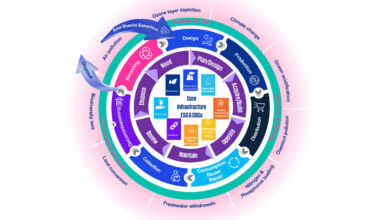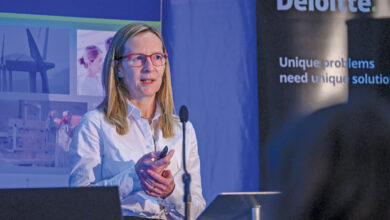Cloud 2020: Advantages of being a late adopter

As a new wave of cloud migration takes off for Ireland in 2020, Capita’s Ed Brown, Head of Growth, Ireland, discusses why now might be the best time to make your move and how to ensure its success.
The move towards cloud economies is escalating. As cloud becomes more central to generating competitive advantage and delivering customer and citizen outcomes.
The global public cloud services market is expected to become fully mainstream in 2020, growing 17 per cent to $266.4 billion in a single year2. Largely focused on digital disruption and business innovation3, this new wave of enterprise cloud migration offers Ireland’s public sector organisations a unique opportunity to avoid the same mistakes.
Digitisation is core to survival in the modern world. By 2022, says Gartner, public cloud services will be essential for 90 per cent of business innovation.
Some organisations are much slower to adopt digital technologies. And this caution could turn out to be an advantage, offering unique insight into the experiences of early adopters. But to get that insight, you need to really examine those early cloud journeys and see how they have lived up to expectations in terms of vision, cost and projected outcomes.
That’s exactly what Capita’s recent cloud survey of 200 UK IT decision makers has done. The results, backed up by industry analysts Bloor and Ovum, are published in our report, ‘From Cloud Migration to Digital Innovation’. The report outlines five recommendations for public organisations considering their next move to cloud:
1. Build a smart strategy
Early adopters who migrated without a transformation strategy haven’t yet maximised the value of cloud. In our survey, 43 per cent believed cloud migration had over-promised and under-delivered.
To succeed in the cloud, you’ll need a sound strategy that’s aligned to your organisational goals. The good news is, not everything has to be transformed at once. Most government organisations will find hybrid IT a much more reasonable goal. Indeed, 90 per cent of organisations will be running a hybrid infrastructure by 20204.
2. Identify and close any skills gaps early on
One of the first things to get right is to ensure you have the right skills for the journey. In our research, 90 per cent of IT leaders encountered one or more unforeseen factors in the cloud and up to 60 per cent felt they lacked sufficient cloud skills and/or expert guidance. This illustrates how important it is to have the right expertise available at each stage of the process to help manage and mitigate risk.
The sheer number of product and feature announcements from public cloud providers means it is imperative to develop a range of specialist skills, which can be very time-consuming. Indeed, organisations that have managed to stay agile and respond quickly to new innovations are finding that the best approach is to outsource.
3. Build a culture of collaboration
Migrating to cloud, even if it’s one digital project at a time, is much more than a change of technology; it’s a change of culture. In the traditional model, IT made all the technical decisions, and service units stuck to solving ‘business’ problems. But when it comes to cloud, it’s crucial to ensure IT is closely aligned with other departments, so you can work collaboratively and set realistic goals.
“I am delighted to be part of this insight initiative by Capita to help refocus IT leadership on the strategic priories of their individual cloud journeys.”
Paul Bevan, Research Director, IT Infrastructure, Bloor
A successful migration project needs to draw together people from across the organisation and beyond, combining diverse skills, specialisms and experience into an ecosystem for transformation.
The first step is to get everyone engaged and ignite the deep conversations that can point the way to real change. With a fully integrated multidisciplinary transformation team you can integrate goals and priorities from across the organisation and explore different solutions to complex problems.
4. Govern your organisational spend in the cloud
Many organisations are shocked to find that, following migration, spend goes through the roof, quickly diminishing the value of cloud. 72 per cent of respondents in our survey were still waiting to see the cost reductions that drove them to cloud in the first place. What’s more, it’s predicted that by 2020, 80 per cent of organisations will overshoot their cloud IAAS budgets by as much as 40 per cent .
The problem is, the speed and flexibility of cloud platforms can encourage indiscriminate application spin-ups and increased spend across the organisation. What’s needed is a focus on governance from the beginning, both to maintain control and dramatically increase the value you gain from cloud.
“The findings in this report by Capita resonate with some of the messaging in our Cloud Computing Trends to Watch research1 and I am pleased to share my views on cloud adoption, and why we need to start thinking differently.”
Roy Illsley, Ovum
5. Adopt an innovation mindset
Digital transformation is about much more than just technology. It’s about creating valuable experiences, social transformation and changing lives. Public sector organisations in Ireland are shifting their whole idea of cloud towards being an enabler for more engaging citizen experiences, better ways of working and improved productivity.
Cloud is the foundation for the stream of emerging technologies that local and central governments, city councils and district authorities are increasingly using to transform urban, community and business life; technologies such as AI, RPA, IoT, big data analytics and more.
Yet to enable iterative innovation in the cloud era requires a change of mindset, organisational culture, and even leadership style to ensure you stay open to new ways of thinking, working and bringing ideas to life.
As Ireland’s public service gets ready to take its biggest ever leap towards cloud, what can public and local government organisations do to ensure their transformation is a success? The simple answer is to focus on getting the foundations right. Consider these five steps and you’ll start to see transformative value in your migration efforts, with faster development cycles, improved cost-efficiencies and quality citizen services as your reward.
For more insight on your transformation journey, download the research report.
E: www.capita.com/powering-local-government






